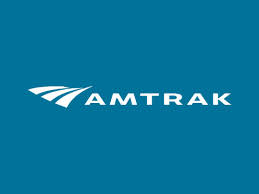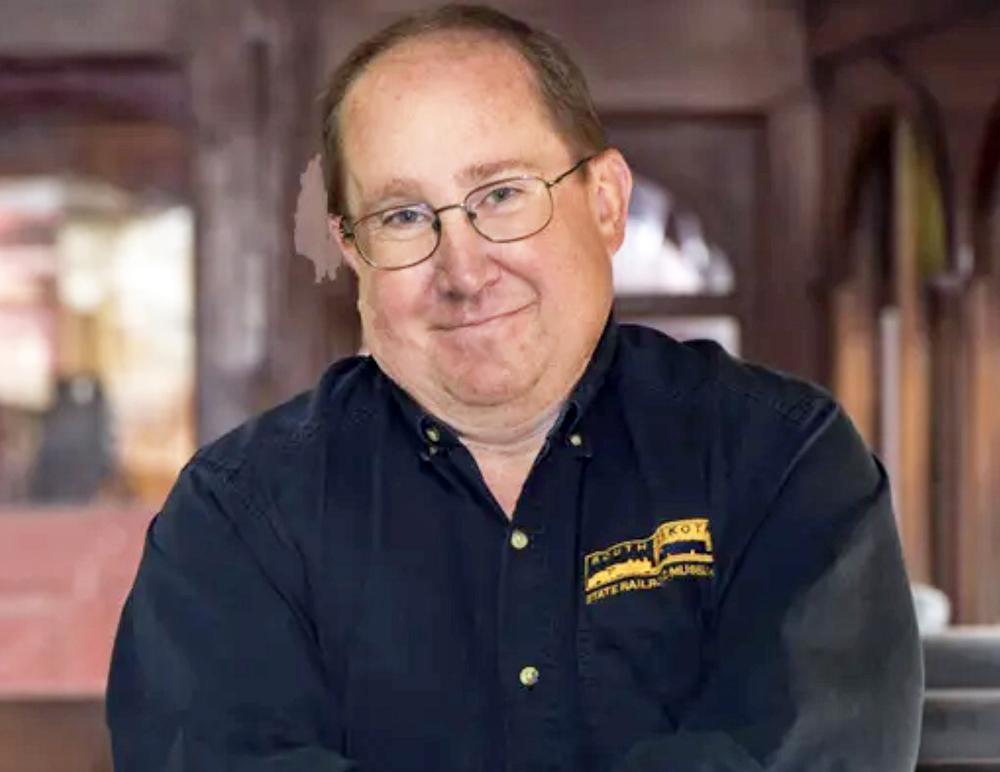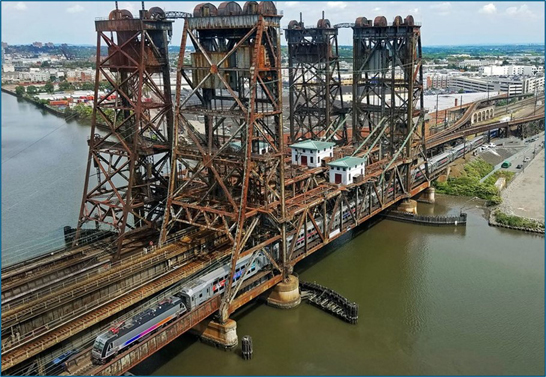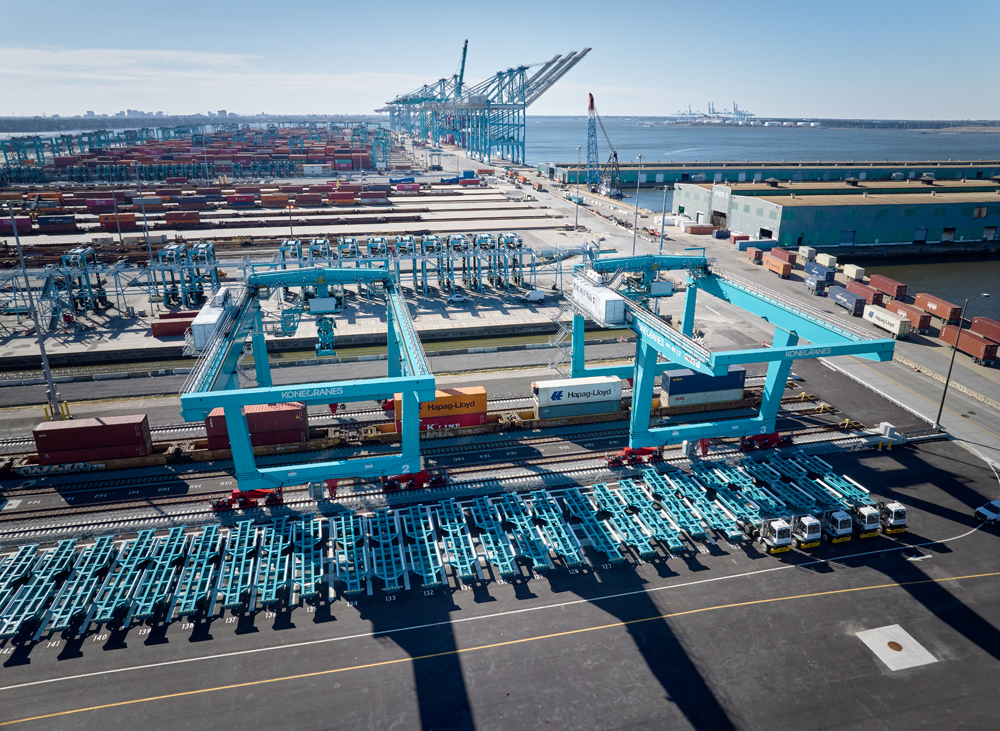TOLEDO, Ohio — A Toledo governmental organization will help fund a feasibility study on reinstating train service between Toledo and Detroit, the Toledo Blade reports.
The Toledo Metropolitan Area Council of Government will provide $20,000 toward the study, expected to cost $50,000, and is asking the city of Toledo to fund the remainder.
The roughly 60-mile route last had service in 1995, with one daily Amtrak round trip that was an extension of Chicago-Detroit service. Restoration would require use of tracks owned and operated by Norfolk Southern, Canadian National, or CSX Transportation.
Among topics to be examined by the study would be “Which route would work? Would one [railroad] be more likely to cooperate?” David Gedeon, the council’s vice president for transportation, told the newspaper.















There currently is a bus connection East Lansing-Detroit-Toledo for the CAPITOL & LAKESHORE. Don’t waste the time and money.
“Wouldn’t it be nice if…”
“There has been talk…”
Dreams.
Mr. McGuire, thanks for your support. My group quit bidding on feasibility studies like this one long ago. A majority of these projects already had a preferred outcome. The sponsors merely wanted to buy a credentialed outsider to validate a politically-inspired regional development agenda. As for Amtrak’s future, it can no longer be an amusement ride operator, its trains no longer a novelty act. Some folks regrettably have spent a lot of time — and column-inches — figuring how to shuffle equipment and schedules to preserve the past, to secure the status quo. In a year or three, we’ll realize that effort was wasted.
I think the speed limit on NS (ex-CR) is 50, so it is not competitive with auto traffic.
This whole discussion is ridiculous. Detroit and Toledo are only 60 miles apart. Just have a dedicated bus meet the LSL at Toledo and run express to Detroit. It can stop at the old Michigan Central Station when that area is redeveloped then move onto downtown and finally terminate in New Center. Since passengers are going to have to change in Toledo anyway the bus is a much better option especially for a 60 mile trip. No need to seek out a railroad that wants the train, no need to pay access fees, no delayed trains due to freight congestion and if the highway is blocked the bus has plenty of alternatives around the congestion.
Trying to promote these ridiculous rail routings over obscure trackage and then extending then to remote areas is why we don’t have better rail passenger service. You don’t need to spend $50,000 to study this. For $50,000 you can get the whole thing started and up and operating. Anything more than that is just plain crazy.
ARTHUR J MILLER, I agree with your comments 95%. Anderson for the most part is moving Amtrak forward and it is railfans that are trying to drag it backwards, mostly it seems, so they have trains to photograph and ride on. The only Anderson move I don’t understand is the private car deal. If this can be made profitable why not do it? Otherwise he is doing a great job getting Amtrak back to the basics. The current Amtrak customer base, outside the corridors, (and the ranks of railfans) will all be dead in 30 years so Amtrak has to get into the 21st century if it is to survive.
Mr. Landey, I hope all understand that Richard Anderson is attempting to make Amtrak appeal to a broader customer base. Going forward, Amtrak can no longer provide services and amenities which are remnants of transportation operations that went bankrupt nearly 50 years ago. That would be roughly analogous to Delta flying DC-7s or even DC-9-10s today. While some might think it fun, a huge majority of travelers would prefer to ride an A320 or B737-900MAX. Or drive. Those who think the world is ending if they cannot get a hot meal on an overnight train probably — and I hate to say this — should begin to consider a future where those long-haul overnight trains are gone. I forecast the demand for frequent (4+ each way each day) inter-city travel between major metropolitan city pairs (1.2 million+ populations) and between even bigger megalopolises soon will require major asset redeployments away from the Late Shore Limited and similar trains. There’s simply not enough money in the public treasury for both rail services. The Congress may save one or two landmark trains — the Southwest Chief is an example. But unless an overnight train can contribute to service in those megalopolises on either end of its trip, they’re going to be history. Ride them while you can. Take good pictures of people, not just equipment. As I look back on my photography of the 1960s and early 1970s, the really interesting views, the one that attract the most attention, have people in them.
On a map, Detroit – Toledo looks like Milwaukee – Chicago. On the railroad, no comparison. Chicago is infinitely more an attraction than Toledo, it is a rail hub (Metra and Amtrak), and has a downtown station for Amtrak. Toledo has none of the above. Nor do any of the railroads connecting (or not connecting) Detroit to Toledo resemble the high-stepping double-track CP Rail corridor Milwaukee to Chicago.
As for passenger service on the A-Sqaured, some jokes aren’t even funny.
ARTHUR I agree with your basic ideas about Amtrak. That being said I’m not so sure that Richard Anderson is the right man or that he’s doing a good job (in a no-win position).
EDWARD B. The Ann Arbor Railroad of course didn’t get to Grand Traverse County, but there was a daily Chessie accommodation from Grand Rapids (with connections to Chicago, Lansing and Detroit). Once in the 1980’s I was at a rural crossroads in that general area, I forget where exactly. I saw a twisting abandoned railbed, good for a train at 5 mph. That was, I later found out, the Chessie line to Traverse City. Some places just aren’t meant to get there by rail.
ARTHUR – I meant no disrespect to Delta. Heck, I was in the terminal because I was flying Delta. Actually that was my only Delta flight ever (connecting at Detroit). Though I often flew predecessors North Central, Northeast, Northwest and Republic.
Mr. Butner, you are correct that the AA ran to Elberta, the ferry dock across from Frankfort. The Great Lakes Central owns what was the AA from a point in Ann Arbor and all remaining trackage north. GLC also bought what was the Michigan Northern (ex-PRR) from Cadillac north to Traverse City and Petoskey. They own some other trackage in Michigan as well. So an Ann Arbor-to-TC train would go to Cadillac on former AA trackage and then switch onto former MN (PRR) at Cadillac.
How about Toledo to Detroit via Ann Arbor (both railroad and city)? There’s a lot of market potential there with a good service. It wouldn’t be fast, but it might be easy. Make it frequent enough to connect with the Michigan trains, and perhaps the Midnight sub-express Amtrak service in Toledo, but use daytime service in Toledo to offer added service to Cleveland sometime. Conceivably, with the Michigan line becoming higher-speed, it could make a daytime Cleveland-Chicago route (or Toledo-Chicago) via Michigan almost as fast as the existing Water-Level route.
RICHARD – We can’t get decent east – west service to Cleveland, a natural passenger traffic flow for which the railroad system was designed.. Let’s do that first, then we can dream about north-south service through Cinncy on routes that have historically hostile to passenger service, are extremely slow, and are clogged with way too much freight they weren’t meant to handle,
Connecting Toledo to Detroit is a start but for the project to be successful it should be part of a Detroit to maybe Nashville or Atlanta via Toledo, Cincinnati and other cities along the way. The only way for Detroit area customers to travel anywhere east, west or south is travel to Chicago and then connect with trains that go south, east or west. A huge waste of 10 hours or more if going back east which you need to do to go south unless going to New Orleans.
Mr. Landey, I have nearly 4,000,000 FF miles on that unnamed major airline with a DTW hub. That unnamed CEO built, IMHO, the world’s best airline. That unnamed airline is so good these days that it can charge $150 to $200 more per seat than its competitors do on identical routes. So while that unnamed CEO killed off film production work and excursions, he did so in an effort to focus on getting the basics done safely and correctly. This CEO seems to be moving Amtrak towards focusing on real transportation, and away from being a novelty act enjoyed by history and rail buffs and by folks who have nothing better to do than take multi-day taxpayer-subsidized land cruises. “But we’ve always done it this way” is the world’s worst business strategy, a recipe for rapid extinction.
Travell between Ann Arbour and Traverce City- is it even possible? The Ann Arbour didn’t terminate in Traverce City- it ended in Elberta. And it missed every town and city of any size along the way. It doesn’t go to Detroit, or Lansing, or Flint. I’m sure most of the trackage is gone in the northern half.
Might as well bring back the Mercury service between Detroit and Cleveland if you want to study something…..
Fifty thousand dollars to do what? Tell them what we already know. That even if you could find a railroad with open arms, there is no and will be no funding in this political environment. More wasted “consultant” spending.
When Wolverine Service trains terminated at the old MC depot, it only required a short back-up move to get to the train to the junction with the old NYC line to Toledo (I rode the train back in the early 90s). Now the Wolverine trains continue past Detroit to suburban Pontiac. There is already an Amtrak Thruway bus between DET and TOL
There has also been talk in recent years about rail service from Ann Arbor to Traverse City, a resort city in NW Michigan. It would not be hard at all to extend that to south to Toledo since it would be on AA RR trackage. North of Ann Arbor it is Great Lakes Central. Alternatively, that could be extended to Detroit, but there would be a crazy back-up move at Ann Arbor since the AA/GLC tracks are on a bridge over the Huron River and the former NYC Amtrak line is at river’s edge. The wye is on the southwest side of the crossing, so a train from Detroit would have to pass west under the bridge, back over the wye uphill to the south, and then gain enough momentum to get up over the bridge going north.
Charles Landey- the Ann Arbor’s last passenger trains ran on July 19, 1950. Ridership peaked in 1913 at 1,146,539 (“The Ann Arbor Railroad 50 Years Ago,” by Henry E. Riggs, 1947). Resort business to Whitmire Lake and Frankfort was big at one point.
CHARLES MORTENSEN _ From what I know, your analysis is correct. The Toledo Amtrak station is on New York Central trackage. The Detroit Amtrak station at New Center is readily accessible from CN to the north (toward Pontiac), both NS and CN to the south (toward Ohio), and NS west to Dearborn, Wayne (CSX connection) and Ann Arbor. CSX could be in the picture on the Michigan end, on a roundabout routing west of Detroit Metro Wayne County Airport, if and only if there is a SE wye at Wayne. The short-live Chicago – Detroit – Toledo train used Detroit’s old Michigan Central Station, not New Center which is more recent. The switch to New Center is of no consequence in this matter.
If the Train Dispatcher track territories tolterm.trk and detterm.trk are accurate, the NS line formerly owned by Conrail is the best way in and out of Toledo, since it would require a simple turn just west of Airline Yard to get to and from the Toledo station. The Detroit station is on CN trackage but is accessible from NS, former Conrail. In Toledo, however, CN is not convenient to the Toledo station at all. CSX isn’t convenient on either end.
ARTHUR J. MILLER – But when you visit the terminal of that major un-named airline at DTW try to avert your eyes from the plaque honoring the CEO of the predecessor airline Northwest, the same guy who is now the CEO of a major passenger railroad.
Well Carl I guess you need to take a look at two things, this Ann Arbor Railroad and the impossibility of connecting it to the former Michigan Central in Ann Arbor. There must be a reason why the Ann Arbor never had passenger service (unless it was like before there was such a thing as a road in Michigan). Actually there are many reasons, which are self-evident to anyone who has ever been to Ann Arbor.
I see the “Wouldn’t It Be Nice If ______ ” crowd is out in force today. Broad statements like “There’s a lot of market potential there” and dreams of “… a Detroit to maybe Nashville or Atlanta via Toledo, Cincinnati” service have no factual research basis. Sadly, they usually are anchored in hopes of restoring the glory days. A major (unnamed) airline with a hub at DTW has 10 nonstops to ATL each day; 4 per day to CVG and CLE; and 6 daily runs to BNA. Additionally, one issue usually not addressed on this forum is, what type of surface transportation systems are at the end of these dreamed-about routes. After one arrives in either downtown CBD, how do you get to your ultimate destination? I recently have been in and around TOL and DTW, and public transportation in both cities is a grim proposition. And the nation’s growing girth is making walking less and less appealing. While I support rational passenger rail expansion, recent models suggest linked city pairs thusly linked need to have, at a bare minimum, 1.2 million residents. (TOL and DTW don’t qualify by a lot.) City pairs of that size may, just may, support three or more roundtrips each day.